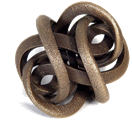Annotation:Queen Mary’s Lamentation: Difference between revisions
No edit summary |
No edit summary |
||
| Line 2: | Line 2: | ||
{{TuneAnnotation | {{TuneAnnotation | ||
|f_tune_annotation_title= https://tunearch.org/wiki/Annotation:Queen_Mary's_Lamentation > | |f_tune_annotation_title= https://tunearch.org/wiki/Annotation:Queen_Mary's_Lamentation > | ||
|f_annotation='''QUEEN MARY’S LAMENTATION.''' Scottish, Air (3/4 time). G Major. Standard tuning (fiddle). AAB. The air was published in several late 18th century sources, including Benjamin Carr’s '''The Caledonian Muse''' (Philadelphia, 1798). It was a composition of | |f_annotation='''QUEEN MARY’S LAMENTATION.''' Scottish, Air (3/4 time). G Major. Standard tuning (fiddle). AAB. The air was published in several late 18th century sources, including Benjamin Carr’s '''The Caledonian Muse''' (Philadelphia, 1798). It was a composition of [[wikipedia:Tommaso_Giordani | Tommaso Giordani]] (1730–1806), a Neapolitan composer who spent much of his mature career in London and Dublin. He came to London with his father’s opera company, where he presented his first opera in 1756. In the next twenty years, still based in London, he composed three other operas, plus arranged other works; he then removed to Dublin and produced seven more operas. His output included sacred music, songs, cantatas, canzonets and chamber music, and his keyboard music was very popular in his time, rivaling J.C. Bach’s, particularly with amateur musicians. | ||
|f_source_for_notated_version= | |f_source_for_notated_version= | ||
|f_printed_sources=Aird ('''Selection of Scotch, English, Irish and Foreign Airs, vol. 4'''), 1796; No. 52, p. 20. | |f_printed_sources=Aird ('''Selection of Scotch, English, Irish and Foreign Airs, vol. 4'''), 1796; No. 52, p. 20. | ||
Latest revision as of 08:27, 17 November 2024
{{#seo:
|type=article
|author=https://www.tunearch.org/wiki/User:WikiSysop
|published_time=2024-11-17
|description=The Internet Archive of traditional Irish, Scottish, British and North American tunes with annotations and free sheet music in pdf
|keywords=fiddle tune finder, find recordings, irish traditional music, tune name finder, tunes in abc format, english country dance, old-time music
|image=TUC-160x120.png
|image_alt=tune name finder
}}
__NOABC__
{{#lst:Queen Mary’s Lamentation|abc}}
{{safesubst:#invoke:string|rep|
|1}}
QUEEN MARY’S LAMENTATION. Scottish, Air (3/4 time). G Major. Standard tuning (fiddle). AAB. The air was published in several late 18th century sources, including Benjamin Carr’s The Caledonian Muse (Philadelphia, 1798). It was a composition of Tommaso Giordani (1730–1806), a Neapolitan composer who spent much of his mature career in London and Dublin. He came to London with his father’s opera company, where he presented his first opera in 1756. In the next twenty years, still based in London, he composed three other operas, plus arranged other works; he then removed to Dublin and produced seven more operas. His output included sacred music, songs, cantatas, canzonets and chamber music, and his keyboard music was very popular in his time, rivaling J.C. Bach’s, particularly with amateur musicians.
{{safesubst:#invoke:string|rep|
|1}}
<vote type=1 />
__NOTITLE__
